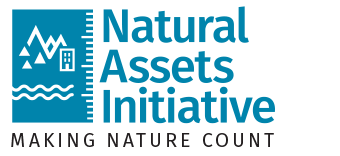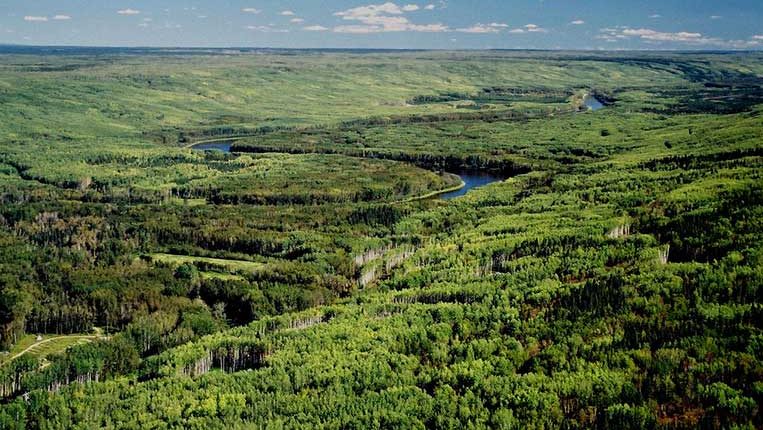Engineers and the move towards municipal natural asset management:
Interview with Ryan O’Grady, P.Eng., Director of Engineering, City of Courtenay
- Where does your interest in municipal natural asset management come from?
I was raised on a Saskatchewan grain farm. This introduced me to fundamental principles of natural asset management. Growing up, I witnessed firsthand the inter-generational impacts of land stewardship decisions. This has stayed with me throughout my engineering career.
Having formal involvement with structured asset management through both consulting and municipal contexts, I joined the City of Courtenay as Director of Engineering in June, 2017. The City was already an established leader in asset management by 2017 and had been accepted into the second MNAI cohort. This was a unique opportunity to leverage the resources and expertise of MNAI with the extensive work undertaken with Asset Management BC (AMBC). The MNAI project focuses on mitigating flooding in Courtenay, a coastal community transected by a river that is impacted by a BC Hydro dam. Flooding has occurred with increasing frequency and severity, and is influenced by multiple natural and inter-jurisdictional factors, in particular storm surge, dam outflow, and tide levels. This work has since provided impetus for the City’s involvement in a watershed-scale MNAI project – a first in Canada.
The economic, social, and environmental benefits of managing natural assets are as relevant in a local government context as they are on a prairie grain farm.
- What is your professional engineering take on natural asset management?
As a municipal employee with P.Eng. and P.Ag. designations, my goal is to ensure cost effective and safe service delivery to municipal residents. This has traditionally been accomplished through “grey” infrastructure solutions: steel and concrete. These assets were often viewed as the service, not the asset providing the service. Therefore, asset management historically involved simply replacing assets without always considering the intention of the asset; or, if there was a more cost effective, creative, or naturalized method to deliver the same service.
To ensure taxpayers receive the best value, there is an obligation to consider cost effective nature-based alternatives in parallel with traditional infrastructure replacement. This includes better inventorying, valuing, management, rehabilitation and restoration of natural assets.
Furthermore, there is increasing expectation from the public and elected officials to consider alternative solutions. We can see all around us and in the news, evidence that the status quo does not always serve us well.
MNAI uses structured approaches and technical acumen, while incorporating evaluation of potentially more cost effective, and perhaps risk tolerant, alternatives. Will every situation offer a preferable nature-based outcome? Of course not, but many will, or perhaps use a combination. As municipalities are increasingly focusing on true infrastructure life-cycle costs, this approach is being normalized.
- Is there a tendency amongst engineering professionals to default to ‘built’ rather than natural solutions?
Most technical professionals, engineering or otherwise, are trained to approach things from a certain perspective. And, in the past, engineers may have had a tendency to replace one engineered asset with another.
However, this is changing. A growing number of engineers recognize that simply replacing like for like doesn’t necessarily consider the fundamental distinction between assets and the services they provide; nor does it always lead to optimal service delivery.
The distinction between assets and services, made more commonplace as a result of modern, structured asset management of the sort advocated by Asset Management BC, was a tipping point. When we consider the actual services provided by assets, it changes the conversation and potential solutions. As more focus is placed on life-cycle costs, with improved understanding of actual operations and maintenance implications coupled with the evolving social and cultural value of certain assets and services, the most appealing solution may evolve into a non-traditional, nature-based alternatives. Many engineering professionals now also regard green infrastructure in all its forms as normal, and many educational institutions are also making this transition.
Finally, I’ve often heard there is a generational difference associated with those who are embracing natural asset management approaches, and those who eschew them; this is something I completely disagree with and would like to dispel. Many leaders in the emerging field of natural asset management are not new grads, and indeed many new grads are reluctant to embrace approaches they were not introduced to during their education or internships.
- From an engineering perspective are natural assets less certain or predicable than engineered assets?
Conventional knowledge says there are fewer variables associated with a piece of grey infrastructure; pipe length, diameter, etc. However, engineering professionals must mitigate risk, typically while minimizing cost.
Furthermore, when we consider external variables impacting the actual service being provided, there could often be reduced financial risk associated with natural assets. And, while I realize this may be a contentious statement, the resilience and adaptability of a pipe to evolving climate or community social factors is zero. By contrast, a natural system can have inherent adaptability, perhaps at a much lower cost than would be required to achieve similar capacity increases to a grey infrastructure system.
We can accurately calculate the ability of a pipe to provide flow, but this certainty needs to be balanced with the often and increasingly uncertain understanding of capacity required in a changing climate.
- Do you see stumbling blocks or challenges in getting more engineers involved in natural asset management?
Humans gravitate to familiar ideas. Most of us never think twice about getting into a vehicle and putting on a seatbelt, yet at one time that was a bizarre concept. As with any change initiative, there will be a range of responses, and since municipal change takes time, identifying barriers, challenges, opportunities, and leveraging points is of incredible value.
In this vein, Asset Management BC has done an excellent job of working with multiple jurisdictions to create incentives through funding. This has ranged from partnering with Federal and Provincial agencies to provide capacity building programs, to requiring many major funding applications to demonstrate some consideration of asset management, and increasingly natural asset management.
Furthermore, relationships are vital. In Courtenay, we have excellent rapport with local partners and stakeholders. Leveraging these relationships and shared progressive approaches to service delivery streamlines funding applications, and bolsters the likelihood of receiving grants. The first MNAI project in Courtenay, which led to the development of the regional watershed MNAI project, is a direct result of collaboration between technical and political colleagues from multiple jurisdictions.
Perspective and willingness to change is also vital. In our region, it was an underlying desire to challenge the status quo of relying exclusively on traditional engineered infrastructure and explore multi-stakeholder and inter-jurisdictional problems that enabled us move ahead with these projects.
- What do you see as the way forward for engineers and natural asset management?
Training and education opportunities, which are influenced heavily by evolving engineering or other professional norms, are pivotal.
Forums to share lessons learned, challenges, and opportunities are also vital: as municipal service delivery expectations rapidly evolve with changing political, legal, regulatory, and social requirements, the “community of practice” approach can be very effective, along with webinars, and other informal forums which facilitate knowledge sharing.
Analogous to how many jurisdictions now provide publicly their GIS or LiDAR data, a significant shift from previous generations, many jurisdictions are embracing genuine collaboration, something which is embraced, encouraged, and expected by many progressive elected officials, stewardship groups, and funding agencies.
BC’s Professional Reliance Review may also generate opportunities to leverage rapport with other professional organizations to consider not only multi-stakeholder and inter-jurisdictional service delivery solutions, but also bolstered collaboration between professionals of diverse technical backgrounds.



